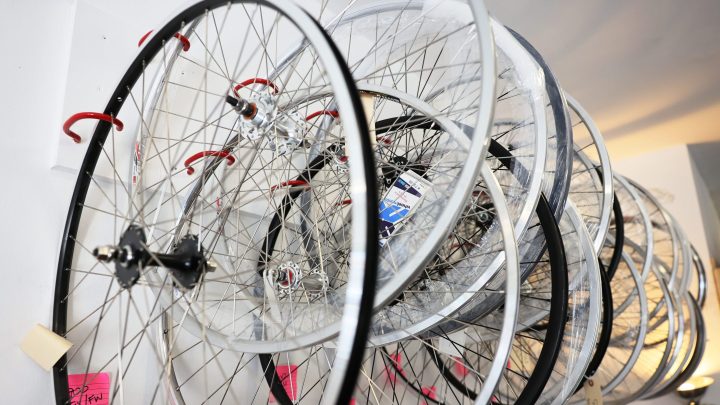
Even with inflation, pricing can be a puzzle for small businesses
Even with inflation, pricing can be a puzzle for small businesses

It’s becoming clearer that the Federal Reserve is starting to get rising prices under control. But with inflation outstripping the Fed’s 2%-per-annum target for more than two years, businesses have had plenty of time to figure out how to raise their own prices to cover higher costs.
When big businesses want to do that, they can pore over reams of data about how their customers and competitors might react and what they should do in response. But small businesses don’t have that luxury.
Some businesses face a lot of restrictions when it comes to setting and changing prices.
“Different brands will have different policies, [including] here’s a minimum advertised price, here’s a window where there’s one month a year where you can go below that price,” said Jeff Cayley, owner of Worldwide Cyclery, a bike store in Newbury Park, California, that sells almost 20,000 products from over 200 brands.
But for some of those products, the store has more control over the prices it can charge. One of those is a brand called Trail One Components, which Worldwide Cyclery owns.
Trail One sells bike parts, including grips, pedals, handlebars and handlebar stems. Manufacturing some of these products has become more expensive recently, so a few months ago, Cayley raised the cost of his carbon fiber handlebars by about 7%.
Sometimes, Cayley said, raising prices has nothing to do with the cost of the product itself.
“Whether that’s even just the lease on the building that we have, or our labor costs, or even just things like electricity and utilities costs,” Cayley said. “As those things inch up, we need to have a larger gross margin in order to accommodate for that.”
Cayley has to balance all of that against what customers are willing to pay. He said the bike industry boomed in the early days of the pandemic, and he could pretty much raise prices and trust that people would pay them. But this year, that’s changing.
“In our industry, those days have passed us,” Cayley said. “Back during 2021, 2022, consumers were much more accepting of that.”
Cayley said he and his staff keep a close eye on what competitors are charging. Sometimes they’ve even reduced their prices. And when the store decides to raise prices, it experiments, to see how increases may land.
“We’ll adjust something, run a test, see what happens, go back to the drawing board. So it’s kind of a never-ending game,” Cayley said.
A lot of it comes down to a business owner’s experience.
“I’m relying on my gut and my intuition a lot,” said Jess Harrington, who owns JessFinessed, a Boston-area company that stages homes that are up for sale.
Harrington said she raised her prices about 25% over the last two years, mostly because she’s had to buy a lot of new furniture and other equipment and rent a bigger warehouse to store it all.
“I must have between 60 and 70 sofas,” Harrington said. “I have a lot of dining tables, I have a room that’s dedicated to textiles and to linens.”
Harrington said she could probably raise her prices even more, since demand for her service has been pretty high lately. But in her industry, she said, there are limits.
“There is always the feeling that, like, what if I raise my prices and no one ever hires me again?” Harrington said.
There is one way to figure out what kind of price increase customers will accept: just ask them.
“That’s how you get there. You have to ask,” said Marcia St. Hilaire-Finn, who owns Bright Start Early Care & Preschool in Washington, D.C. “It can’t be out of the sky, or ‘I think they can afford it.’ You know, it’s asking.”
St. Hilaire-Finn said she’s raised her prices between 3% and 5% every year since the pandemic started. Once per quarter, she surveys her customers.
St. Hilaire-Finn said no one’s ever happy to hear that they’ll have to pay more for child care. But when she gets the surveys back, people are understanding.
“They’re like, ‘Yeah, we get it,’” she said.
As part of the survey, St. Hilaire-Finn said she tries to be transparent about why she’s raising prices.
“In order to continue that service, the teachers do need a raise,” St. Hilaire-Finn said. “We provide benefits. Real estate goes up by 3% every year. So the minimum we can raise this is at least by 4%.”
One thing St. Hilaire-Finn’s been doing to keep her price hikes to a minimum is cutting back on investment.
“Maybe we forgo getting that new playground,” St. Hilaire-Finn said. “What we have is fine, it’s just not up to date. The kids are still having fun on the old playground.”
And as long as her income covers the cost of doing business, St. Hilaire-Finn said she’s OK with that.
There’s a lot happening in the world. Through it all, Marketplace is here for you.
You rely on Marketplace to break down the world’s events and tell you how it affects you in a fact-based, approachable way. We rely on your financial support to keep making that possible.
Your donation today powers the independent journalism that you rely on. For just $5/month, you can help sustain Marketplace so we can keep reporting on the things that matter to you.

















